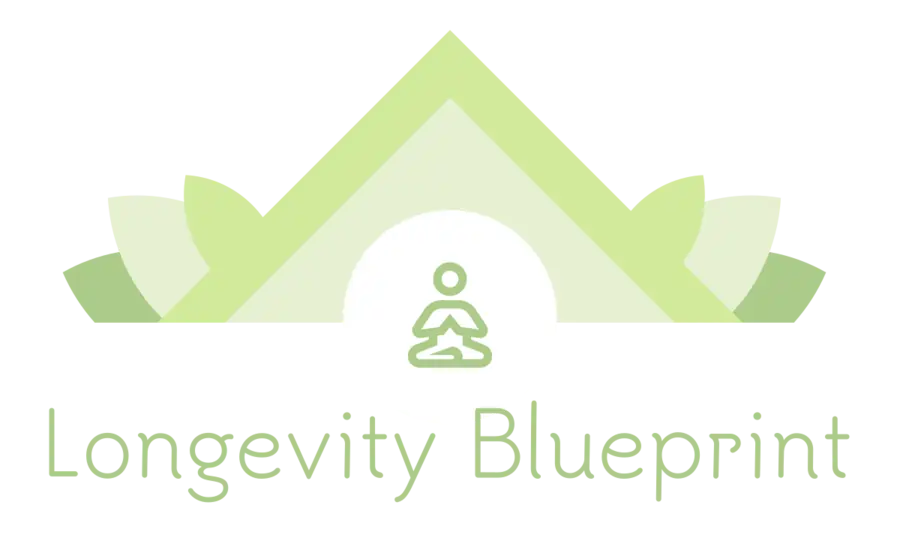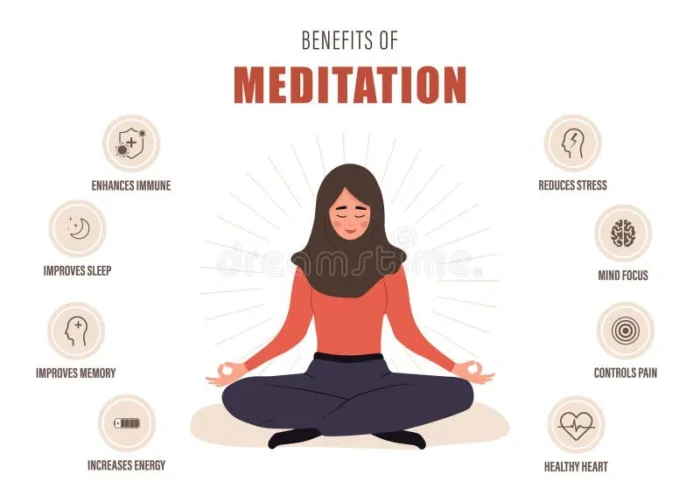How to Regulate Cortisol: Powerful Key to Slowing Down Aging

How to regulate cortisol might be the key element you’re missing in your anti-aging strategy. Most people concentrate on skincare and exercise routines. However, scientific research indicates that high cortisol levels speed up biological aging and accelerate the entire aging process, including changes in sleep patterns and the onset of sleep disorders.
Studies have shown a direct connection between chronic stress and elevated cortisol levels. These factors lead to a 2-4 fold increase in inflammatory markers that predict mortality rates among older adults. This crucial stress hormone affects more than just aging – it influences blood pressure, memory function, and sleep quality significantly. Research demonstrates that individuals above 66 years with imbalanced cortisol show more physical restrictions, decreased verbal recall abilities, and are more likely to experience sleep disturbances and insomnia.
📺 **Watch Short version Now: How to Regulate Cortisol **
Here I have compiled proven, science-backed methods on how to regulate cortisol naturally. You can find practical approaches to keep your stress hormones balanced and potentially slow your biological clock through simple 10-minute daily exercises, specific dietary adjustments, and strategies to improve sleep efficiency.
Quick Wins: Immediate Actions on How to Regulate Cortisol
“Sometimes the most important thing in a whole day is the rest we take between two deep breaths.” — Etty Hillesum, Dutch diarist and Holocaust victim
You don’t need to wait weeks or months to learn how to regulate cortisol and actually start to manage it. Research shows several techniques can provide immediate benefits. Seven out of ten adults in the United States deal with stress or anxiety daily [1]. These quick wins can help you take control of your stress levels right away and potentially improve your sleep-wake cycle.
Simple breathing techniques that work in minutes
Your breath can regulate cortisol levels anytime, anywhere. Studies show deep breathing exercises directly lower serum cortisol levels and let your parasympathetic nervous system take over [2]. This helps your body switch from “fight or flight” mode to “rest and digest” state almost right away, which can be particularly beneficial for those experiencing insomnia or other sleep disorders.
The 4-7-8 breathing technique helps regulate cortisol [2]. Here’s what you need to do:
Inhale quietly through your nose for 4 counts
Hold your breath for 7 counts
Exhale completely through your mouth for 8 counts
Repeat 4-5 times
Practice this technique 5-10 times daily for the best results, even when you feel calm [3]. Belly breathing works well too – just push your stomach out as you inhale deeply to use your diaphragm fully. A 2019 review showed that diaphragmatic breathing lowers cortisol levels by a lot [4].
Dietary changes with rapid effect
Your food choices can change your cortisol levels within hours. Research shows that eating lots of added sugar and saturated fat raises cortisol levels more than eating fruits, vegetables, and whole grains [4].
These foods can help regulate your cortisol quickly:
Dark chocolate: Its polyphenols can reduce cortisol levels. A small study showed eating just a 25g piece of high-polyphenol dark chocolate daily measurably lowered cortisol [5].
Avocados: They’re rich in magnesium that helps regulate cortisol [4]. Their unsaturated fats protect nerve cells from cortisol damage [5].
Fermented foods: Yogurt, kombucha, and sauerkraut contain probiotics that improve stress response. People who took probiotic supplements did better on memory tasks under stress compared to those who didn’t [5].
Bananas: They contain tryptophan, an amino acid that directly lowers cortisol levels in some people [5].
Staying hydrated matters too—dehydration can temporarily raise cortisol levels, so drink water throughout the day [4]. Cut back on caffeine, alcohol, and highly processed foods for the best results, as they can spike cortisol levels [4].
Related post: Healthy Diet for Longevity
Physical movements to release stress hormones
Exercise works well for immediate cortisol regulation. Just five minutes of aerobic activity can help reduce anxiety [1]. The key lies in choosing the right type and intensity, which can also help improve sleep quality and potentially address issues like sleep apnea or restless legs syndrome.
Light to moderate exercise creates endorphins—natural painkillers that fight cortisol’s effects [1]. A meta-analysis showed that physical activity lowered cortisol levels considerably (SMD = -0.37, p < .001) [6].
Try these for quick stress relief:
A 5-minute walk outside (nature time helps reduce cortisol more) [7]
Gentle stretching combined with deep breathing [8]
Relaxing yoga poses instead of intense ones [4]
Listen to your body rather than focusing on performance metrics when exercising to manage cortisol. Research suggests doing about 150-200 minutes of mostly light-to-moderate intensity movement weekly [4]. Note that intense exercise temporarily raises cortisol, so stick to gentler forms when you’re stressed.
Starting with just one of these strategies can help regulate your cortisol today. Pick the approach that feels most natural to you—your body will reward you with less stress and possibly slower aging.
Related post: Exercises for Seniors
How Cortisol Affects Your Body’s Aging Process
Chronic stress does more than make you tired—it ages your body from within. Learning about this connection shows how managing your cortisol levels might slow down your biological clock and potentially improve age-related sleep changes.
The stress-aging connection explained
Your body’s exposure to ongoing stress keeps cortisol levels higher than what’s healthy. Research shows that higher cortisol in older adults directly links to increased risk of chronic disease and mortality [9]. This happens because long-term cortisol exposure damages telomeres—the protective caps at the ends of your chromosomes that naturally shorten as you age [10]. A study revealed that women under high stress had immune system cells that aged an extra 10 years compared to those with lower stress levels [11].
High cortisol also triggers oxidative stress that damages cells and DNA [12]. This creates a harmful cycle: damaged mitochondria in heart cells produce up to 10 times more hydrogen peroxide than healthy ones, which speeds up aging [13]. These processes can contribute to sleep disorders and changes in sleep architecture as we age.
How cortisol disrupts other hormones
Cortisol affects your entire endocrine system like falling dominoes. High cortisol reduces testosterone levels in both men and women, which impacts muscle mass, sleep quality, and metabolism [7].
As with testosterone, cortisol suppresses estrogen production, leading to irregular periods, weight gain, and mood swings [7]. Your progesterone levels drop significantly with high cortisol, which can cause headaches, anxiety, and lower sex drive [7]. These hormonal changes can contribute to sleep disturbances, particularly during the menopausal transition.
Beyond reproductive hormones, cortisol interferes with:
Thyroid function, affecting energy and metabolism
Insulin sensitivity, increasing diabetes risk
Melatonin production, disrupting sleep patterns and circadian rhythm
Hunger-regulating hormones like ghrelin and leptin [7]
Visible signs that cortisol is aging you faster
Your body signals clearly when cortisol speeds up aging. High levels over time lead to thinner skin, fewer new skin cells, and reduced collagen production [9]. So you might see more wrinkles, dark circles under your eyes, and early age spots.
Too much cortisol creates a specific pattern of weight gain, especially around your face and abdomen [14]. This “cortisol belly” happens because the hormone stores fat in these areas while breaking down muscle elsewhere [15].
Other signs include faster hair loss, dry scalp, weaker bones, and exhaustion that stays with you no matter how much you rest [9]. Memory problems and poor concentration often come with these physical changes since cortisol can shrink your brain’s memory center—the hippocampus [10]. These changes can also affect sleep quality, leading to increased sleep onset latency and more frequent wake after sleep onset.
Creating Your Personal Cortisol Management Plan
Your body’s unique stress response needs a good cortisol management strategy. A personal plan that addresses your specific needs works better than generic approaches to regulate cortisol naturally and improve overall sleep health.
Identifying your unique stress triggers
Each person reacts differently to stress. Something that spikes your cortisol might not bother someone else at all. Research shows that stress can stem from three main sources: everyday hassles, life changes, and traumatic events [16].
Your physical reactions can help you spot personal triggers. Watch how your body responds – a tight stomach, sweaty hands, or racing thoughts in certain situations [16]. Notice your reactions during work, relationships, and even while reading news [17].
Writing down statements like “I become overwhelmed when…” or “At work, I wish people would…” helps reveal hidden triggers [17]. To name just one example, you might find that performance reviews keep you up at night instead of presentations, potentially contributing to insomnia or other sleep disturbances.
Tracking your cortisol patterns
After spotting your triggers, watching how your body’s cortisol responds will teach you a lot. Normal cortisol peaks in the morning (5-25 mcg/dL at 8 a.m.) and drops throughout the day, reaching its lowest point when you sleep [18]. This pattern is closely tied to your circadian rhythm and can affect various sleep stages.
Here’s how to track your patterns:
A diurnal cortisol test might help – it measures levels throughout the day using saliva samples [19]
Watch for signs like fatigue, irritability, and sugar cravings that point to abnormal cortisol rhythms [20]
Your energy changes can tell you a lot – afternoon crashes or feeling “tired but wired” might signal cortisol problems [20]
Customizing strategies based on your lifestyle
Everything in cortisol management comes down to matching strategies with your daily life. Look at which parts of your routine add the most stress. Time management techniques might be your focus if work deadlines make you anxious and disrupt your sleep-wake cycle.
Finding the right mix is vital. Add physical activity, good nutrition, and mindfulness in ways that suit you best. Studies show moderate exercise helps balance cortisol levels [2]. A diet with fewer refined carbs and saturated fats prevents cortisol spikes [2].
Note that changing your environment often works better than trying to change external factors. Make your home and work spaces calmer. This could mean a clean desk or a quiet corner for meditation, which can also help improve sleep efficiency.
Talk to healthcare providers before making big changes, especially if you have health conditions or are experiencing sleep disorders. They can guide you about your hormone health [21] and may recommend treatments like cognitive behavioral therapy for insomnia if necessary.
The Sleep-Cortisol Connection: Optimizing Your Rest
Sleep quality forms the base of your body’s hormonal balance, especially when you have cortisol regulation. Sleep and cortisol levels work together like a two-way street. They create either a positive cycle of hormonal balance or a negative cycle of disruption, which can be particularly noticeable during the menopausal transition.
How poor sleep lifts cortisol
Your body’s stress response and sleep use the same regulatory pathway—the hypothalamic-pituitary-adrenal (HPA) axis [22]. A properly working system makes cortisol peak naturally in the morning to give you energy. It then drops to its lowest point at night to help you sleep [22]. But sleep deprivation throws off this delicate balance, potentially leading to sleep disorders and changes in sleep stages.
Just one night of bad sleep can affect your cortisol rhythm by a lot. Studies show that after just 24 hours without sleep, people feel more anxious and depressed. Their morning cortisol levels also drop [23]. The rate at which free cortisol decreases in saliva becomes almost 6 times slower in people who don’t get enough sleep compared to well-rested people [24].
This creates a problematic cycle—lack of sleep raises cortisol, and high cortisol makes sleep harder [4]. Studies show that people with insomnia have higher nighttime cortisol levels [5], which makes falling asleep more difficult. This can be particularly challenging during perimenopause and menopause, when sleep problems are already common.
Creating the ideal sleep environment
Cortisol and melatonin work opposite to each other—when one goes up, the other goes down. A good sleep environment helps restore this natural balance [5]. Your ideal sleep space should have:
Temperature control: A cool bedroom around 65°F (18.3°C) works best for sleeping [4]
Light management: Total darkness tells your body to make melatonin; use blackout curtains if needed [4]
Sound minimization: Get rid of noise or use white noise machines to cover disturbing sounds [4]
Electronic-free zone: Screen light wakes up your brain and stops melatonin production [4]
Bedtime routines that regulate cortisol naturally
Regular pre-sleep habits signal your body to lower cortisol levels. The best way to improve sleep quality is to go to bed and wake up at the same time daily [25]. This helps maintain a healthy circadian rhythm and can be particularly beneficial for those experiencing age-related sleep changes. Other proven practices can help too:
Deep breathing before bed lowers serum cortisol levels and activates your relaxation response [5]. An Epsom salt bath helps you relax both physically and mentally.
Writing in a journal can clear racing thoughts from your mind. Research shows that writing about worries can lower cortisol and help you sleep better when stressed [5]. A cup of chamomile tea has also shown good results for relaxation before bed [21].
Setting up the perfect sleep routine takes time, but balanced cortisol levels and possible slower aging make it worth the effort. This is especially important as we age, when sleep efficiency tends to decrease and sleep disorders become more common.
Related post: Perfect Night Routine
Mind-Body Practices That Regulate Cortisol Levels
“The greatest weapon against stress is our ability to choose one thought over another.” — William James, American philosopher and psychologist
Your body and mind work together to naturally control cortisol levels. Research shows these practices can affect your stress hormone balance when you add them to your daily routine, potentially improving sleep quality and addressing issues like menopause insomnia.
Evidence-based meditation techniques
Scientists have verified that mindfulness meditation can lower cortisol. Research shows your cortisol drops when you stay in the present moment instead of worrying about past or future concerns [3]. An eight-week mindfulness program showed remarkable results—cortisol levels dropped from 381.93 nmol/L to 306.38 nmol/L [6].
Start a simple mindfulness routine with 10 minutes each day. Watch your breathing without judgment. You can make your sessions longer as you improve. This works because you learn to notice what’s happening now instead of stressing about problems [3]. Regular meditation practice can also help improve sleep quality, particularly for those experiencing perimenopause sleep problems.
Yoga poses that reduce stress hormones
Yoga proves to work well for lowering cortisol. Thomas Jefferson Medical College found that people who tried yoga for the first time had lower cortisol after just one class [1]. These poses work best:
Supported Child’s Pose (3 minutes)
Legs Up the Wall (3-5 minutes)
Reclined Butterfly (2 minutes)
Supported Spinal Twists (2 minutes per side)
These gentle poses help your body move from fight-or-flight mode to rest-and-digest mode [26], which can be particularly beneficial for improving sleep and managing menopause-related sleep issues.
Related post: How Meditation Can Help You Live Longer
Social connection as a cortisol regulator
Good relationships help regulate your cortisol naturally. Research shows people with supportive relationships have lower cortisol than those who are alone or isolated [27]. This “social buffering” shows how spending time with loved ones can quickly lower your stress hormones [28].
Nature therapy for hormone balance
Nature offers another way to balance cortisol. Walking in natural areas lowers stress hormones better than city walks. Even short nature breaks can improve your hormone levels [29]. This can be particularly helpful for managing sleep disturbances and improving overall sleep quality as we age.
Related post: How to Naturally Balance Hormones After 40
Advanced Strategies for Long-Term Cortisol Balance
Advanced strategies for long-term cortisol regulation go well beyond simple stress management techniques. People looking for sophisticated approaches to hormone balance can benefit from these evidence-based methods, which may also help address age-related sleep changes and improve sleep efficiency.
Adaptogens and their effects on the HPA axis
Your body’s stress-response system works directly with adaptogenic herbs to regulate the hypothalamic-pituitary-adrenal (HPA) axis. These plants don’t just suppress or stimulate cortisol levels – they help normalize them [30].
Withania somnifera (Ashwagandha) stands out as the most really researched adaptogen. Clinical trials show it substantially decreases serum cortisol levels in stressed adults after 56-60 days of treatment [8]. Meta-analyzes confirm notable cortisol reduction (MD = -3.27 μg/dL) compared to placebo groups [8]. Some studies suggest that adaptogens like Ashwagandha may also help with sleep issues, including those related to menopause and aging.
Effective adaptogens also include:
Rhodiola rosea and Schisandra chinensis that improve resistance to toxic chemicals while regulating stress hormones [31]
Eleutherococcus senticosus that supports healthy HPA function by modulating cortisol release [30]
Fish oil supplements, since high omega-3 levels relate to lower inflammation and cortisol [25]
Technology tools for stress monitoring
Modern wearable devices now allow live cortisol tracking, which works better than traditional lab tests that take days to show results [32]. UCLA researchers have created a smartwatch that measures cortisol in sweat without invasion [32]. This helps you spot patterns and take action before stress builds up, potentially preventing sleep disturbances.
StressFit represents another breakthrough by tracking electromyogram signals and sweat cortisol levels at the same time [33]. This combined technology helps identify connections between muscle tension and hormone changes, giving you a full picture of stress levels [33]. Such tools can be particularly useful for monitoring how stress and cortisol levels affect your sleep-wake cycle.
Working with healthcare providers on hormonal health
Endocrinologists become essential when self-management isn’t enough. These specialists can suggest and interpret specialized hormone tests, create detailed treatment plans, and prescribe medications as needed [34]. They can be particularly helpful in addressing sleep disorders and hormonal imbalances that affect sleep, such as those experienced during menopause.
Endocrinologists usually order blood tests to check hormone levels and might recommend imaging tests to look at your endocrine glands [34]. They prove especially valuable if you have complex hormonal imbalances or symptoms that don’t improve with lifestyle changes [35].
People with chronic conditions can develop individual-specific management strategies by working with hormone specialists. Many patients maintain lifelong relationships with their endocrinologists to track their hormonal health [34]. This can be particularly beneficial for managing age-related sleep changes and improving overall sleep quality as we get older.
Conclusion
The way we manage cortisol levels can shape how we age and how well we sleep. Our genes matter, but science shows our daily choices substantially affect our stress hormone levels, our biological age, and our sleep quality.
Simple actions like deep breathing, mindful movement, and proper sleep create real changes in cortisol production. These benefits go beyond just stress relief – they can slow down cellular aging, shield our bodies from wearing out too soon, and improve our sleep efficiency.
Your cortisol management experience begins when you understand your body’s unique triggers and responses. Small, steady changes work better than major lifestyle shifts. You might choose breathing exercises, adaptogenic herbs, or tech-based monitoring. The secret lies in finding practices that blend naturally into your daily life and help maintain a healthy sleep-wake cycle.
Note that cortisol regulation doesn’t mean eliminating all stress – it’s about building resilience and giving your body tools to stay balanced. Pick one strategy that appeals to you and build your toolkit as you learn to read your body’s signals better. This approach can be particularly helpful in managing age-related sleep changes, including those associated with menopause and perimenopause.
Helpful Resources:
National Institutes of Health: Stress Management
Mayo Clinic: Chronic Stress Management
American Psychological Association: Understanding Cortisol
FAQs
How does cortisol affect the aging process and sleep?
Elevated cortisol levels can accelerate aging by damaging telomeres, increasing oxidative stress, and disrupting other hormones. This can lead to premature wrinkles, weight gain around the abdomen, and cognitive decline. It can also disrupt sleep patterns, potentially leading to insomnia and other sleep disorders.
What are some quick ways to lower cortisol levels and improve sleep?
Deep breathing exercises, eating foods like dark chocolate and avocados, and engaging in light physical activity like a short walk or gentle stretching can help lower cortisol levels











